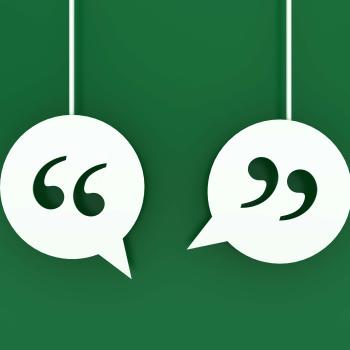Students track the elements of mystery stories through Directed Learning-Thinking Activities, story maps, and puzzles. Then they offer clues for other readers as they plan and write original mystery stories.

Everyone Loves a Mystery: A Genre Study

Grades
|
Word Sorts for Beginning and Struggling Readers
K - 2
Lesson Plan
| Standard Lesson
Students are introduced to short-vowel word families and learn to sort words alone and with a partner using the Word Family Sort activity.

Grades
|
Analyzing the Purpose and Meaning of Political Cartoons
9 - 12
Lesson Plan
| Standard Lesson
It is important for students to know how to evaluate messages conveyed by the news media. Exploration of the artistic techniques used in political cartoons leads to critical questioning.

Grades
|
Mind Pictures: Strategies That Enhance Mental Imagery While Reading
6 - 8
Lesson Plan
| Standard Lesson
Students create mental images while reading using a three-pronged approach: developing schemata and visual awareness; Watch-Read-Watch-Read (W-R-W-R), using video clips; and a strategy similar to the think-aloud approach.

Grades
|
What Did They Say? Dialect in The Color Purple
9 - 12
Lesson Plan
Y'all set down a spell and learn ‘bout dialects!" In other words, your students will use The Color Purple to explore dialect and how it reveals information about the characters.

Grades
|
Teaching Point of View With Two Bad Ants
3 - 5
Lesson Plan
| Standard Lesson
Students will be crawling all over this assignment when they use illustrations and text to learn about life from a bug's point of view.

Grades
|
Identifying and Classifying Verbs in Context
3 - 5
Lesson Plan
| Minilesson
The interactive read-aloud in this lesson helps students to identify and classify the three verb typesaction, state-of-being or linking, and helping verbs.

Grades
|
Peer Edit With Perfection: Effective Strategies
3 - 5
Lesson Plan
| Standard Lesson
Students take a fresh look at the revision process and help one another polish their written work through a peer-editing strategy that is simple, systematic, and constructive.

Grades
|
Identifying and Understanding the Fallacies Used in Advertising
9 - 12
Lesson Plan
| Standard Lesson
Students examine the fallacies that surround them every day, deconstruct fallacious images and messages in advertisements, and demonstrate their understanding of the fallacies through multimedia presentations.

Grades
|
Diagram It! Identifying, Comparing, and Writing About Nonfiction Texts
K - 2
Lesson Plan
| Unit
Students compare the traits fact and fiction by using a Venn diagram to compare fiction and nonfiction books about Native Americans.

Grades
|
Using Historical Fiction to Learn About the Civil War
3 - 5
Lesson Plan
| Standard Lesson
Students in grades 4 and 5 discuss inferential comprehension and visualization as they use a think-aloud questioning strategy to develop a deeper understanding of a historical novel.

Grades
|
Fact or Fiction: Learning About Worms Using Diary of a Worm
K - 2
Lesson Plan
| Standard Lesson
Students often believe that fiction writers make everything up, seldom realizing how research worms its way into entertaining writing. In this lesson, students read Diary of a Worm to find out how fact merges with fiction.

Grades
|
Book Buddy Biographies: Intermediate and Primary Students Working Together
K - 2
Lesson Plan
| Standard Lesson
Students create a personalized biography for their reading buddy, and each child is the author, illustrator, and editor.

Grades
|
Audience, Purpose, and Language Use in Electronic Messages
6 - 8
Lesson Plan
| Minilesson
Students explore using electronic messaging and Internet abbreviations for specific purposes and examine the importance of using a more formal style of writing based on their audience.

Grades
|
Research Building Blocks: "Cite Those Sources!"
3 - 5
Lesson Plan
| Standard Lesson
Students learn the importance of crediting others for their words and ideas, and then learn the paraphrasing and citation skills necessary to avoid plagiarism.

Grades
|
Research Building Blocks: Skim, Scan, and Scroll
3 - 5
Lesson Plan
| Standard Lesson
In this lesson from a research skills unit, students read informational text, looking for supporting details. They practice skimming and scanning print resources, and scrolling through electronic resources.

Grades
|
Myth and Truth: Independence Day
3 - 5
Lesson Plan
| Standard Lesson
By exploring myths and truths surrounding Independence Day, students think critically about commonly believed stories regarding the beginning of the Revolutionary War and the Independence Day holiday.

Grades
|
Research Building Blocks: Examining Electronic Sources
3 - 5
Lesson Plan
| Minilesson
In this lesson, students evaluate and rate the relevance of electronic resources as they research information about their state.

Grades
|
Research Building Blocks: Notes, Quotes, and Fact Fragments
3 - 5
Lesson Plan
| Minilesson
Students are guided through the process of taking notes while reading factual information, then turning those notes into new sentences and paragraphs written in their own words.

Grades
|
Research Building Blocks: Hints about Print
3 - 5
Lesson Plan
| Minilesson
In this lesson from a research skills unit, students examine abstracts on selected books to determine their relevance and helpfulness.